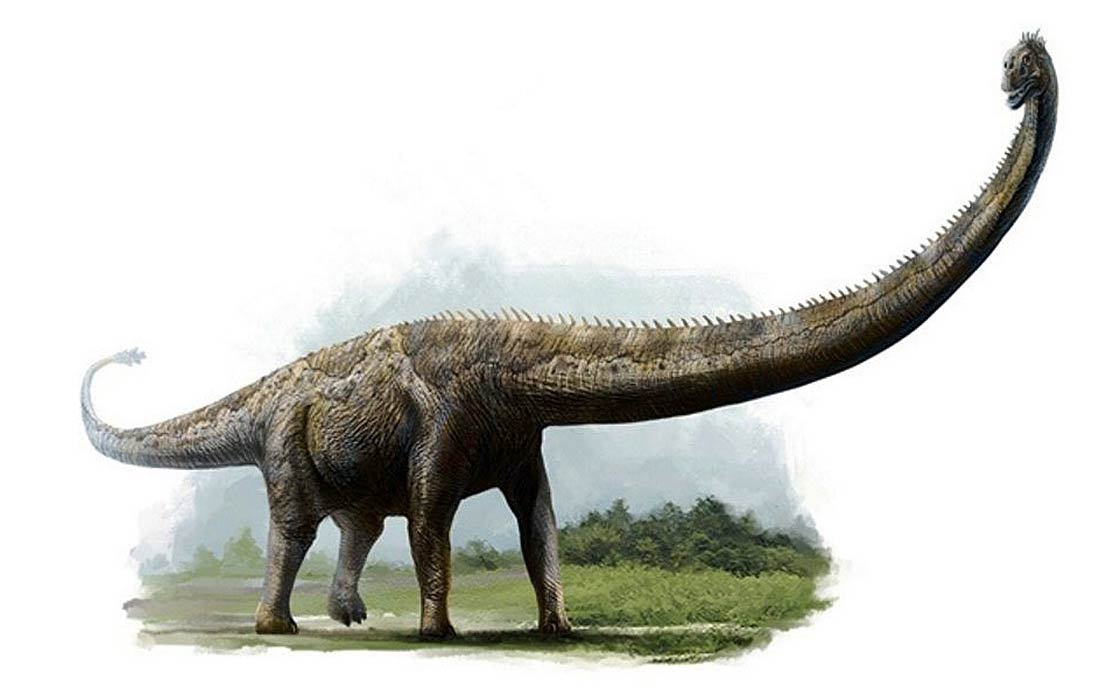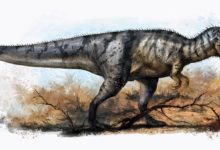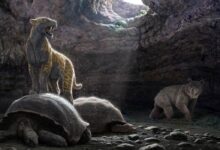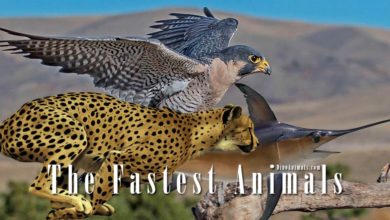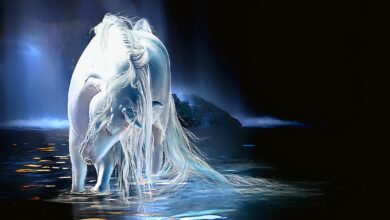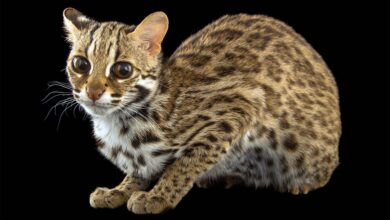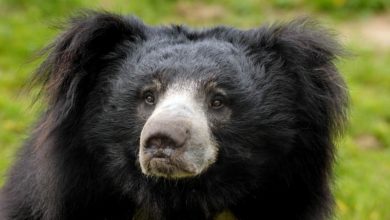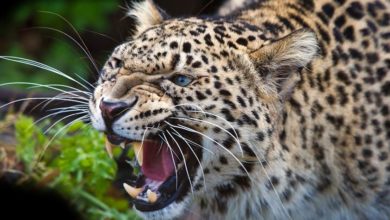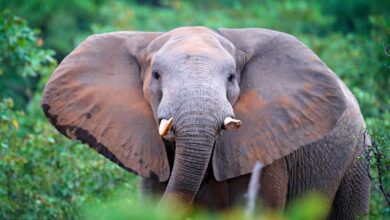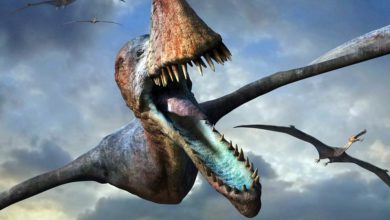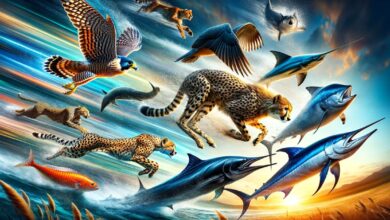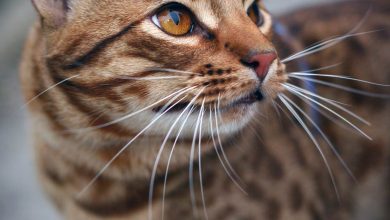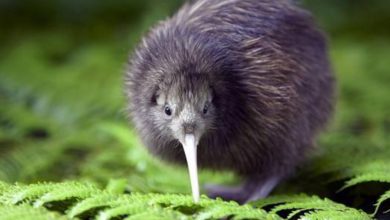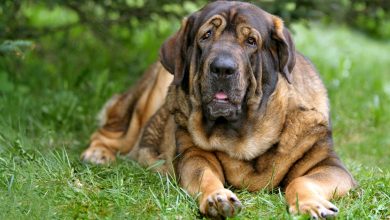Dinosaurs with the longest necks – Mamenchisaurus
Dinosaurs with the longest necks – Mamenchisaurus
Sauropods had the longest necks among dinosaurs
Mamenchisaurus – an Asian giant with the longest neck among dinosaurs – maybe even longer than the Barosaurus. Although a complete skeleton has not been found, it is easy to guess that the Mamenchisaurus was larger than the largest modern animals.
Some of sauropods had necks longer than any other animal (although they had fewer vertebrae than the serpentine necks of the sea reptiles – plesiosaurs, who also lived in the Mesozoic era). In the past, it was believed that sauropods stood at the bottom of bodies of water, and their long neck allowed them to raise their heads above the water to draw air. Today it is known that they were land animals. Thanks to the long neck, they could reach for a large radius of plants without moving from their place. Thanks to this, they saved a lot of energy.
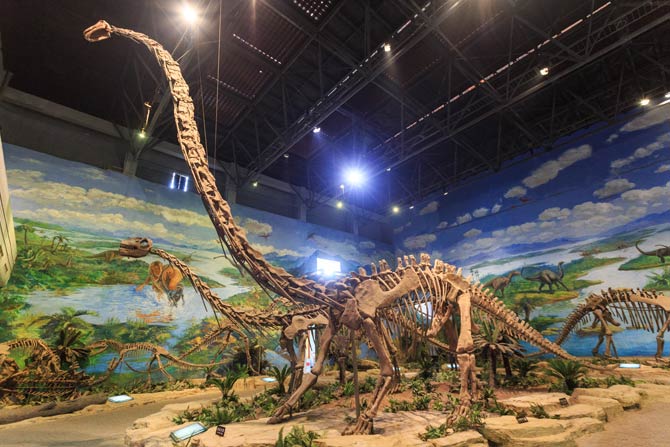
Mamenchisaurus
Occurrence and dating
Several species of Mamenchisaurus have been discovered, all living 160-145 million years ago in the Late Jurassic period. Mamenchisaurus lived in the areas of today’s China and Mongolia at a time when the Earth was very warm, the sea level was high, and there was no ice on the poles. It was also the time of giant sauropods roaming the land of our planet.
Apart from Mamenchisaurus, the continents were occupied by other giants: Camarasaurus, Apatosaurus, Diplodocus, Brachiosaurus, and Supersaurus. In addition to the powerful sauropods, there were also: Stegosaurus, Tuojiangosaurus or predators: Allosaurus, Coelurosaurs and many, many others.
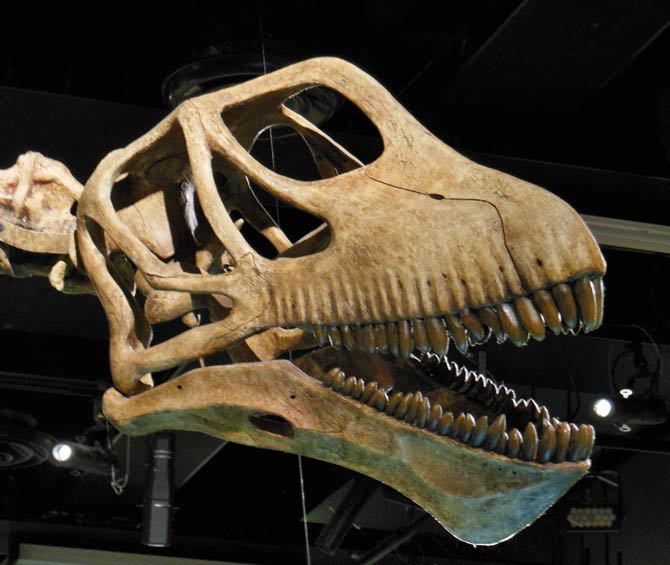
Characteristic
It did not differ in appearance from other sauropods, except for one element – an incredibly long neck. It consisted of 19 vertebrae, no other dinosaur had a longer neck, but the very structure of the vertebrae limited the flexibility of this part of the body – it probably couldn’t make sudden turns, but it easily reached the tallest trees to eat.
The neck was parallel to the ground and helped the animal get large amounts of plant food from the crowns of forest trees. Due to their size, sauropods were not allowed to enter forests, so their necks – including that of the Mamenchisaurus – helped to obtain food while remaining in the open.
It is believed that thanks to its long neck, the Mamenchisaurus could reach the soft ferns (horsetails, mosses, ferns) growing on moist soil that could become a trap for large and heavy animals. Taking advantage of its anatomical possibilities, the dinosaur did not have to risk his life to taste these plants.
As a herbivore, he had blunt, paddle-shaped teeth for chewing thick plant material. This is one of the distinguishing features of the Mamenchisaurus from the Diplodocidae sauropods, which have pin-shaped teeth – differences in dentition have convinced specialists that the Mamenchisaurus is not closely related to the Diplodocus. Apart from the teeth, there was a significant difference in the shape of the head – the skull of our Asian giant looked like a box, because the muzzle was clearly shortened, but the diplodocus had an elongated mouth.
The hind limbs were longer than the forelegs, which makes it similar to the Diplodocidae family, but it has the most in common with the brachiosaurus, which also had blade-shaped teeth and necks that allowed it to eat plants growing high above the ground. The Diplodocus, including the Apatosaurus, was more designed to eat terrestrial vegetation.
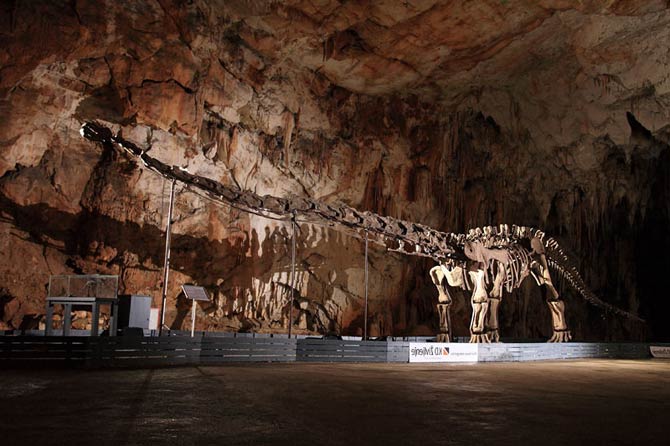
Diet
Like all sauropods, it was herbivorous. He needed a huge amount of food daily to survive. The plants could be swallowed whole or chewed, but it is possible that he used gastrolytes – gastric stones that allowed food to rub during stomach cramps. Blunt teeth made it possible to strip the leaves of the stems.
Behavior
The Mamenchisaurus could travel in herds, and it would travel to other lands when its food was depleted. Experts are also uncertain about the reproductive system of the Mamenchisaurus, but it is known to be an oviparous animal, like all sauropods. The fossilized eggs of this dinosaur were found and found that they were not in the nest, but in a straight line, suggesting that the Mamenchizaurus laid them while walking and was unfamiliar with caring for its offspring.
Intelligence
In the past, sauropods were thought to have a second brain located in the spinal cord near the hip joint, but now scientists have departed from this theory. Today, sauropods are believed to be one of the least intelligent dinosaurs, and the evidence for this is the body weight to brain weight ratio.

Discovery story
The dinosaur was discovered in 1952 at the Yitang Highway construction site in the Chinese province of Sichuan. The incomplete skeleton was described and named in 1954 by a Chinese palaeontologist – Professor Yang Zhongjian (C.C. Young). The find did not contain all the cervical vertebrae, because “only” 14. The species Mamenchisaurus constructus (typical species) was estimated at 13-15 m in length.
In 1972, another species was discovered – Mamenchisaurus hochuanensis thanks to the cervical vertebrae, and the length of the entire neck was estimated at about 9.3 m. The find contains all cervical vertebrae, 19 in total.
In 1993, another species was described: Mamenchisaurus sinocanadorum, based on the found skull and the first four cervical vertebrae. The specimen had the longest cervical ribs (about 4.1 m each), which placed the dinosaur in first place in this respect. Previously, the favorite was Sauroposeidon, whose cervical ribs measured 3.42 m.
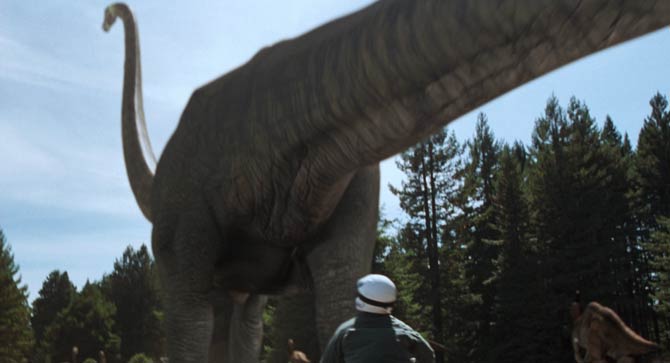
Mamenchisaurus in the movie
If you remember the second part of Jurassic Park, namely the scene of “hunting” dinosaurs on motorcycles, you will remember the image of a motorcycle ride under a huge dinosaur. This is none other than the hero of our today’s story – the Mamenchisaurus. We have already recalled this film and this scene several times – including when describing the Parasaurolophus. The mentioned scene can be seen in this article.
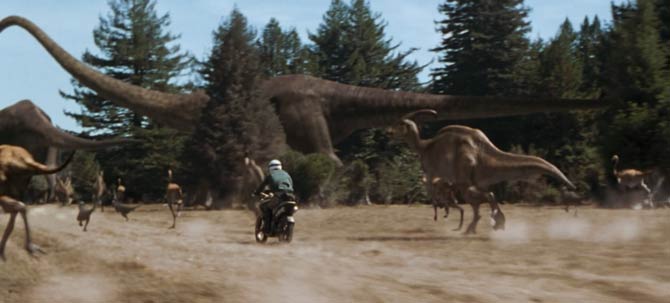
Detailed characteristics for dinosaur enthusiasts
Mamenchisaurus was a great representative of the sauropods. While the Mamenchisaurus constructus, known only from a single skeleton, is estimated to be 13 meters (43 ft) in total length, Mamenchisaurus hochuanensis was probably significantly larger; the largest discovered specimen of this type measured an estimated 22 meters (72 ft) in length. Weight estimates for this specimen vary between 14.3 and 18.17 tonnes depending on the study. Mamenchisaurus jingyanensis could have grown up to 26 meters long, but Mamenchisaurus sinocanadorum could have grown up to 35 meters long – however, these species have only survived from very fragmentary skeletons.
Mamenchisaurus (“Mamenchi lizard”) was a huge dinosaur from the area of present day China. It had the longest neck among all animals, perhaps even up to 15 m. Nevertheless, the neck was relatively light. Some areas of the bone were as thin as eggshells. Each cervical vertebra had two bar-shaped ribs that stiffened the neck. The Mamenchisaurus resembles a Diplodocus in some spine features.
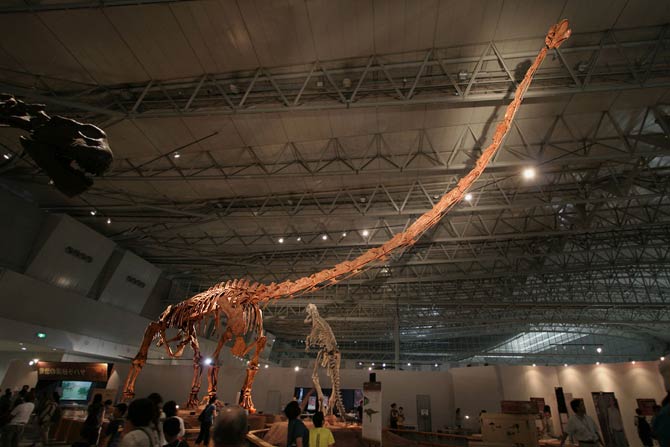
Mamenchisaurus also had the longest ribs of all sauropods – they were up to 4.1 m long. The teeth of this reptile were very strong, which may indicate that it ate on very hard parts of plants. Replicas of the reconstructed skeletons of these animals are on display at the Beijing Natural History Museum and at the Victoria Museum (Australia).
A complete skull is only known from the Mamenchisaurus youngi species. The skull was extremely small in relation to the body – including the lower jaw he measured 51.0 cm length, 19.8 cm width and 40.1 cm height, wherein a throat length of about 6 meters length. The brain cavity of this skull showed a volume of only about 60 milliliters.
Overall, the skull resembled that of the Camarasaurus , but was thinner and longer. Well-defined scleral rings around the eyes indicate a good sense of sight. The lower jaw was on the front (symphysis) Relatively low and showed the side of a small opening (external Mandibularfenster) – this opening was in all other sauropods except Shunosaurus closed. The chisel-like teeth were close to each other. Between 14 and 18 teeth were present on each side in the upper jaw and 4 teeth in the premaxillary located in front of the upper jaw. The lower jaw, meanwhile, contained between 18 and 24 teeth on each side.
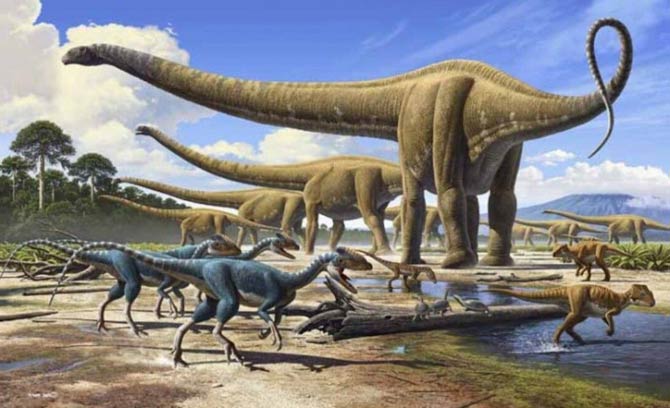
The spine consisted of 18 to 19 cervical vertebrae, 12 back vertebrae, 4 to 5 sacral vertebrae and over 50 tail vertebrae. The neck was one of the longest of all sauropods and was more than three times as long as the trunk. In the largest known specimen of Mamenchisaurus hochuanensis , the neck measured over 9.8 meters in length. Only the remains of the related genus Omeisaurus suggest an even longer neck in relation to the overall length.
The cervical vertebrae were characterized by very long cervical ribs, which ran down along the cervical spine and in Mamenchisaurus sinocanadorum reached a length of up to 4.1 meters. It is controversial whether Mamenchisaurus kept his neck horizontal or was able to raise it up like a giraffe in order to graze at higher altitudes. However, a recent biomechanical study noted that the neck was too immobile to straighten due to the very long ribs of the neck – unlike representatives of the Diplodocidae, whose neck was significantly more flexible and possibly allowed to straighten up. In other features, the spine was similar to that of the Diplodocidae: such were the spinous processesthe posterior cervical and anterior vertebrae bifurcated; in addition, the middle vertebrae had typical double-bar-like chevron bones.
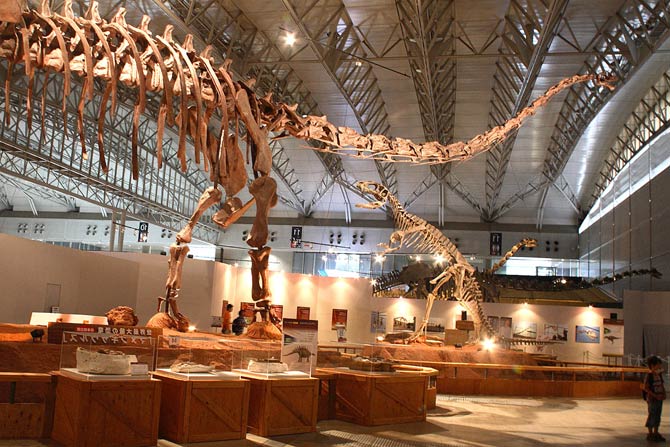
Detailed data / dimensions (size)
Mamenchisaurus
- Length: up to 35 m (115 ft) Mamenchisaurus sinocanadorum
- Weight: 60-80 tonnes
- Height at the withers: 3.3 – 8 m (depending on the species)
- Height with the neck: approx. 13.4 m
- Neck length: up to 15 m (49 ft) Mamenchisaurus constructus
- Life expectancy: up to approx. 100 years
Occurrence
- The areas of today’s China (Sichuan province) and Mongolia
- Dating: 160 – 145 million years ago
- Period: Late Jurassic
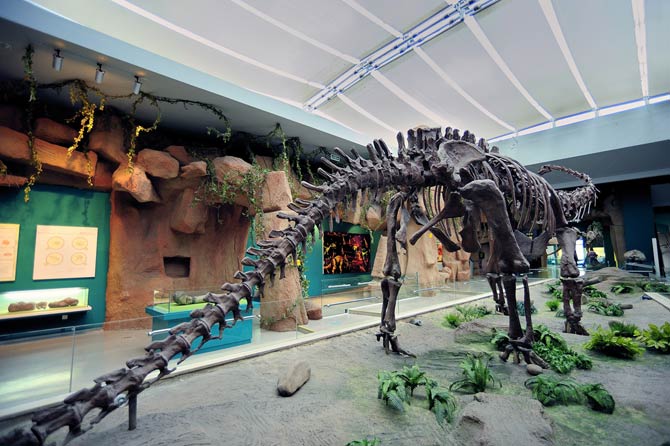
Classification
- Kingdom: Animalia
- Phylum: Chordata
- Clade: Dinosauria
- Clade: Saurischia
- Suborder: †Sauropodomorpha
- Clade: †Sauropoda
- Family: †Mamenchisauridae
- Genus: †Mamenchisaurus
- Species:
- † Mamenchisaurus constructus Young, 1954
- † Mamenchisaurus hochuanensis Young & Zhao, 1972
- † Mamenchisaurus sinocanadorum Russell & Zheng, 1994
- † Mamenchisaurus youngi Pi, Ouyang & Ye, 1996
- † Mamenchisaurus anyuensis He et al., 1996
- † Mamenchisaurus jingyanensis Zhang, Li & Zeng, 1998
- † Mamenchisaurus yunnanensis Fang et al., 2004
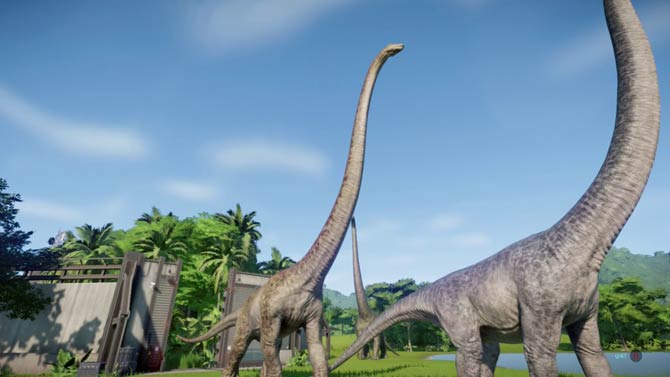
Mamenchisaurus – interesting facts
- The generic name means “Mamenchi lizard” and refers to the place where this dinosaur was discovered.
- Scientists disagree about the position of the Mamenchisaurus’ neck, but most support the view that it was horizontal with the ground. If the longest neck in Earth’s history were to be vertical, the dinosaur would have to have an unimaginably strong heart that could pump blood to a height of more than 13 meters.
- China is one of the richest countries in terms of the number of discovered dinosaurs. Few people know that Sichuan Province is the best place in the world to search for the remains of Jurassic beasts.
- It is now recognized as a type of sauropod unique to the Asian continent.
- The Mamenchisaurus neck was longer than the school bus.
- The neck of the Mamenchisaurus was about 1/2 of its total body length.
- Despite its impressive length, the Mamenchisaurus neck was light as in some places the bones were as thin as eggshells, and each cervical vertebra was equipped with 2 bar-like ribs that effectively stiffened the neck.

Recommended
- The longest dinosaurs. Sauropods Top 10
- The heaviest dinosaurs – Top 10
- The longest predatory dinosaurs. Theropods Top 10
- The heaviest predatory dinosaurs Top 10
- The longest Ornithischians (Ornithischia) TOP 10
- The heaviest Ornithischians Top 10
- The largest raptors (dromaeosaurs) Top 10
- The heaviest Dromaeosaurids / dromaeosaurs – Top 10
- The longest Ankylosaurus Top 10
- The heaviest Ankylosaurus Top 10
- The longest ceratopsians
- The heaviest cerapsians
- The longest and largest ornithopods
- The heaviest ornithopods Top 10
- The longest Stegosaurians (Stegosauria) TOP 10
- The heaviest Stegosaurians (Stegosauria) Top 10
- The smallest sauropods Top 10
- The smallest dinosaurs Top 10
- The largest pterosaurs Top 10
- Dinosaurs
- Dinosaurs database
- Predatory dinosaurs
- Animals & dinosaurs records
- The fastest animals – Top 100
- The fastest birds – Top 10

